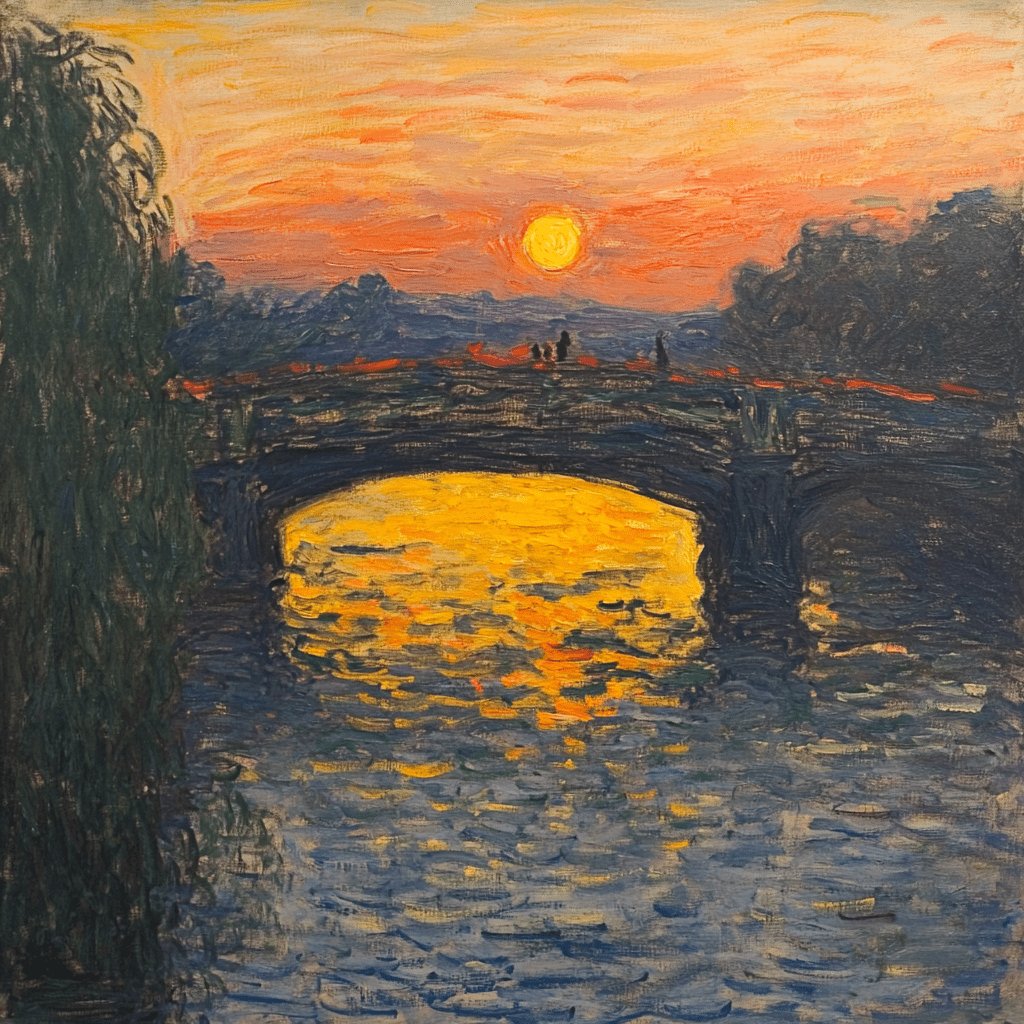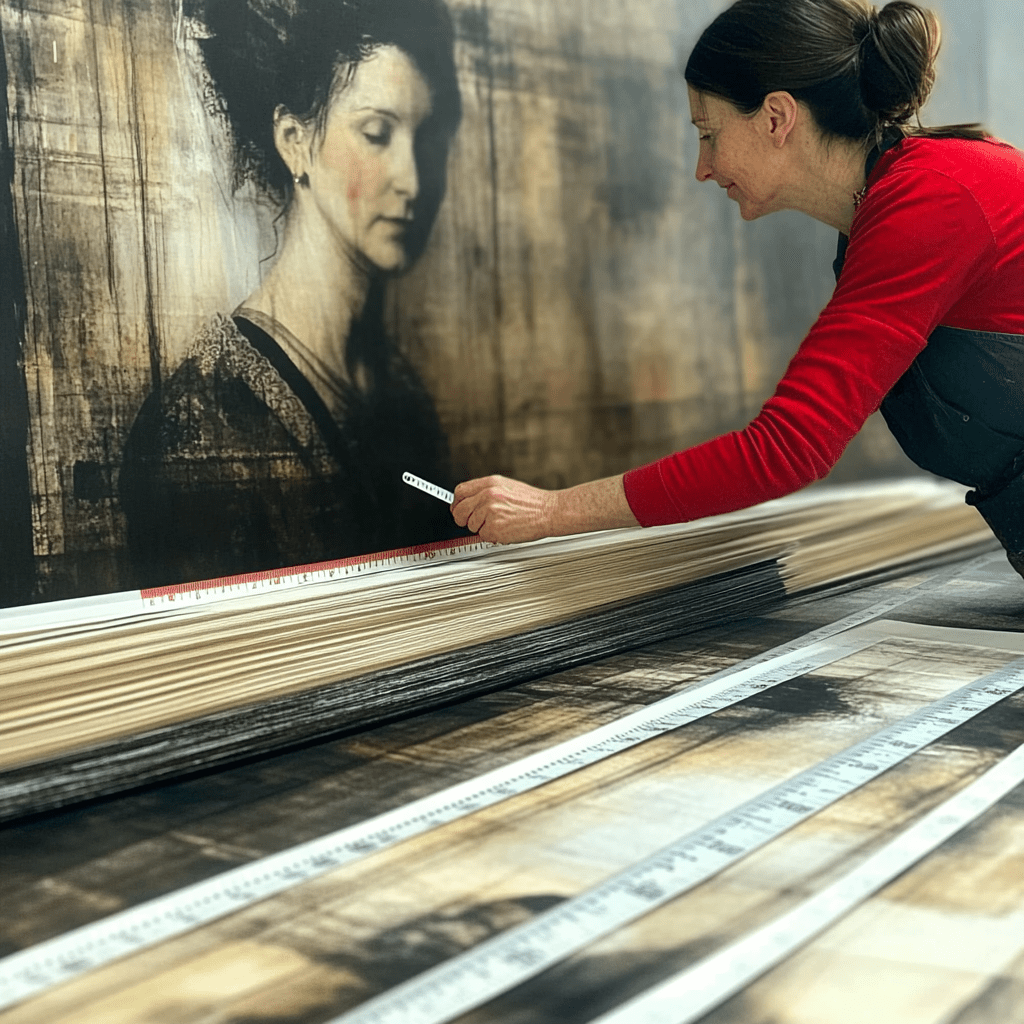Contemporary Figurative Painting Exploring Artists and Artwork
In the vibrant landscape of contemporary art, figurative painting stands out as a dynamic and evolving genre that continues to captivate audiences worldwide. As artists delve into the nuances of the human figure and the representational visual language, contemporary figurative painting offers a rich tapestry of styles and interpretations. This exploration delves into the essence of figurative painting today, highlighting its evolution, key artists, techniques, and the challenges faced by contemporary figurative painters in the modern art world.
What is Figurative Painting in Contemporary Art?

Defining Figurative Painting
Figurative painting, at its core, is the art of depicting real objects, particularly the human figure, in a way that is recognizable and relatable. Unlike abstraction, which veers towards non-representational forms, figurative painting emphasizes clarity and form. This genre has been a staple of art history, serving as a bridge between traditional and contemporary art forms. In the realm of contemporary art, figurative painting has seen a resurgence as artists explore new figurative expressions, blending classical techniques with modern sensibilities to create compelling narratives.
The Evolution of Figurative Painting in Contemporary Art
The journey of figurative painting within contemporary art is marked by a constant dialogue between tradition and innovation. Since the advent of modern art, artists have continually redefined figuration to reflect societal changes and personal introspections. This evolution is evident in the works of artists who, while rooted in the traditions of oil painting and fine arts, embrace postmodern influences and contemporary realism. The shift from classical still life and portraiture to more experimental forms showcases the genre's adaptability and its enduring relevance in recent art movements.
Key Differences Between Figurative and Abstract Art
While both figurative and abstract art occupy significant spaces within contemporary art, they differ fundamentally in their approach and expression. Figurative art prioritizes depiction and realism, often using the human figure as a central theme, whereas abstraction focuses on color, form, and composition devoid of direct representational elements. This distinction allows figurative artists to weave narrative and emotion through tangible forms, engaging viewers with relatable imagery, while abstract artists invite interpretation through ambiguity and abstraction, creating a diverse art landscape.
Who Are the Leading Contemporary Figurative Painters Today?

Profiles of Top Contemporary Figurative Painters
Contemporary figurative painters are redefining the boundaries of figuration with innovative techniques and thought-provoking themes. Artists like Jenny Saville and Julien Delagrange exemplify the depth and diversity of contemporary figurative art. Saville, known for her large-scale oil paintings of the human form, challenges traditional beauty standards and explores themes of identity and corporeality. Delagrange, on the other hand, merges classical techniques with contemporary themes, creating works that resonate with modern audiences while paying homage to art history.
Impact of British Contemporary Figurative Artists
The influence of British contemporary figurative artists is profound, with many leading the charge in redefining modern art. These artists, often working with oil on canvas, have contributed significantly to the global art scene, blending British cultural elements with universal themes. Their impact is not only seen in the galleries of London but also in international art exhibitions and collections. By exploring narratives that range from the personal to the political, British contemporary figurative artists continue to shape the discourse around contemporary art and its role in society.
How Jenny Saville Influences the Art World
Jenny Saville is a pivotal figure in contemporary figurative painting, known for her powerful depictions of the human body. Her work challenges conventional notions of beauty and representation, making her a major influence in the art world. Saville's exploration of the human figure through a lens of realism and distortion invites viewers to engage with complex themes of identity, gender, and the body. Her contributions have not only elevated the status of contemporary figurative art but have also inspired a new generation of artists to explore figuration with boldness and authenticity.
How Do Contemporary Figurative Painters Approach Their Work?

Techniques Employed by Modern Figurative Artists
Contemporary figurative artists employ a diverse array of techniques to bring their visions to life. Traditional methods such as oil painting are often juxtaposed with modern approaches, including mixed media and digital art. This fusion allows artists to explore new dimensions of texture, color, and form, creating artworks that are both innovative and grounded in art history. By experimenting with different techniques, these artists challenge the boundaries of what figurative painting can be, ensuring the genre's continued evolution and relevance in the art world.
The Role of Mediums in Contemporary Figurative Painting
Mediums play a crucial role in the expression and impact of contemporary figurative painting. From the classic use of oil on canvas to the incorporation of digital technologies, the choice of medium can profoundly influence the mood and message of a piece. Artists often select mediums that resonate with their personal style and thematic focus, using them to enhance the emotive and narrative qualities of their work. This versatility in medium selection reflects the adaptability of contemporary figurative art and its ability to communicate across various contexts and audiences.
Exploring Themes and Subjects in Figurative Art
The themes and subjects explored in contemporary figurative art are as varied as the artists themselves. Common themes include identity, the human condition, and societal issues, often depicted through the lens of personal experience and cultural commentary. These subjects provide a rich canvas for artists to challenge perceptions and engage viewers in meaningful dialogue. By exploring themes that resonate on both personal and universal levels, contemporary figurative artists create artworks that are not only visually compelling but also intellectually and emotionally engaging.
What Are the Most Notable Figurative Artworks of Recent Times?
Iconic Figurative Paintings and Their Significance
Recent times have seen the emergence of several iconic figurative paintings that have left a lasting impact on the art world. These works often address pressing social issues or offer introspective reflections on the human experience. Their significance lies in their ability to transcend cultural and temporal boundaries, resonating with diverse audiences. Through their mastery of form and content, these artworks continue to inspire and provoke thought, securing their place in the canon of high art and contemporary figurative painting.
Exhibitions Showcasing Contemporary Figurative Art
Exhibitions play a pivotal role in showcasing the diversity and innovation of contemporary figurative art. Major art galleries and museums around the world host exhibitions that highlight the works of leading figurative painters, providing a platform for them to reach broader audiences. These exhibitions not only celebrate the achievements of individual artists but also foster dialogue around the themes and techniques that define figurative painting today. By presenting a wide range of perspectives and styles, these exhibitions contribute to the ongoing evolution of the genre.
How Galleries Influence the Popularity of Figurative Artworks
Galleries are instrumental in shaping the popularity and reception of figurative artworks. Through curation and promotion, galleries bring visibility to contemporary figurative artists, connecting them with collectors, critics, and the public. The strategic placement of artworks in prominent galleries can elevate an artist's career, while also influencing trends within the art market. By fostering an appreciation for figurative art, galleries play a crucial role in ensuring the genre's vibrant presence in the contemporary art scene.
What Challenges Do Contemporary Figurative Artists Face?
Balancing Tradition and Innovation in Figurative Art
One of the primary challenges faced by contemporary figurative artists is balancing tradition with innovation. While rooted in the rich history of figurative painting, these artists strive to push the boundaries of the genre, incorporating new ideas and technologies. This balance requires a delicate negotiation between respecting the past and embracing the future, ensuring that their work remains relevant and engaging. By successfully navigating this dynamic, contemporary figurative artists can create works that honor tradition while breaking new ground in the art world.
Market Dynamics Affecting Figurative Painters
The art market presents a unique set of challenges for figurative painters, from fluctuating demand to the pressures of commercialization. As trends shift and collectors' preferences evolve, artists must adapt to maintain their relevance and financial viability. The market's dynamics often influence artistic choices, as painters navigate the balance between personal expression and commercial success. Understanding these market forces is essential for contemporary figurative artists to thrive in an ever-changing landscape.
The Future of Figurative Painting in the Digital Age
The digital age presents both opportunities and challenges for the future of figurative painting. As technology becomes increasingly integrated into artistic practices, contemporary figurative artists are exploring new mediums and platforms to expand their reach and impact. Digital tools offer innovative ways to create and share art, but they also raise questions about the preservation of traditional techniques and the authentic experience of viewing art. As the digital landscape continues to evolve, figurative painters must navigate these changes to ensure the genre's continued growth and relevance.
Enhance Your Space with Unique Modern Masterpieces
Are you inspired by the innovative mediums and conceptual depth highlighted in our exploration of contemporary art? You’re not alone! Today’s art enthusiasts are seeking cultural relevance and emotional connections in their artwork. However, finding pieces that resonate with modern themes and fit your unique style can be a challenge. That’s where we come in!
At Rossetti Art, we specialize in canvas prints, original paintings, and modern sculptures that celebrate the spirit of now. Each piece created by Chiara Rossetti brings a personal touch that connects deeply with current social narratives—just like the modern masterpieces discussed in the article. Don’t miss out on the chance to elevate your home decor with breathtaking artwork that speaks to your values and aesthetic. Explore our collection today and find your perfect piece! Act now, and transform your space into a gallery of inspiration!
FAQ
Q: What defines contemporary figurative painting in the context of recent art history?
A: Contemporary figurative painting refers to the style of representational painting that focuses on the human figure and everyday life. It has evolved significantly in recent art history, incorporating elements from movements such as conceptual art and pop art. This genre often challenges traditional norms and explores new ways of depicting the human form, making it an essential part of examining contemporary art.
Q: Who are some influential contemporary artists known for their figurative works?
A: Influential artists today in the realm of contemporary figurative painting include Luc Tuymans, Gerhard Richter, and Marlene Dumas. These artists have significantly shaped the landscape of contemporary painting with their innovative approaches to figuration and representational painting.
Q: How has figuration in painting evolved since art since 1900?
A: Since art since 1900, figuration in painting has undergone numerous transformations. The rise of postmodern art movements and the influence of minimal art and pop art have pushed artists to explore new dimensions of figuration, often blending abstract and realistic elements to create unique visual narratives.
Q: What role do British painters play in the development of new figurative painting?
A: British painters have played a significant role in the development of new figurative painting. Artists like David Hockney and Francis Bacon have been pivotal in redefining how figuration is approached, influencing both European and global art scenes with their distinctive styles and innovative use of brushstrokes.
Q: How do art critics and art historians view the impact of Jean-Michel Basquiat on contemporary painting?
A: Art critics and art historians regard Jean-Michel Basquiat as a transformative figure in contemporary painting. His work is celebrated for its raw energy and fusion of street art with fine art, offering a powerful commentary on social and cultural issues. Basquiat's influence extends across recent art history and continues to inspire new generations of artists.
Q: What is the significance of still life painting in contemporary art?
A: Still life painting remains a significant genre in contemporary art as it allows artists to explore themes of mortality, beauty, and the mundane. Contemporary artists often reinterpret this traditional genre by incorporating modern elements and symbolic meanings, thus keeping it relevant in the art of our time.
Q: Can you provide examples of how influential artists today have participated in retrospective exhibitions?
A: Influential artists today, such as Gerhard Richter and Marlene Dumas, have participated in retrospective exhibitions that showcase their extensive bodies of work. These retrospectives offer valuable insights into their artistic evolution and the development of contemporary painting as a whole.
Q: How does the work of Luc Tuymans reflect new European painting trends?
A: Luc Tuymans' work reflects new European painting trends through his subdued color palette and exploration of historical and political themes. His paintings often challenge viewers to consider the complexities of memory and perception, making him an important painter in the landscape of contemporary European art.
Q: What impact has the retrospective of Gerhard Richter had on the understanding of contemporary painting?
A: The retrospective of Gerhard Richter has significantly impacted the understanding of contemporary painting by highlighting his versatile approach to art. Richter's ability to seamlessly transition between abstract and figurative works demonstrates the fluid boundaries of contemporary art and his role as a pivotal figure in recent art history.




Leave a comment
This site is protected by hCaptcha and the hCaptcha Privacy Policy and Terms of Service apply.